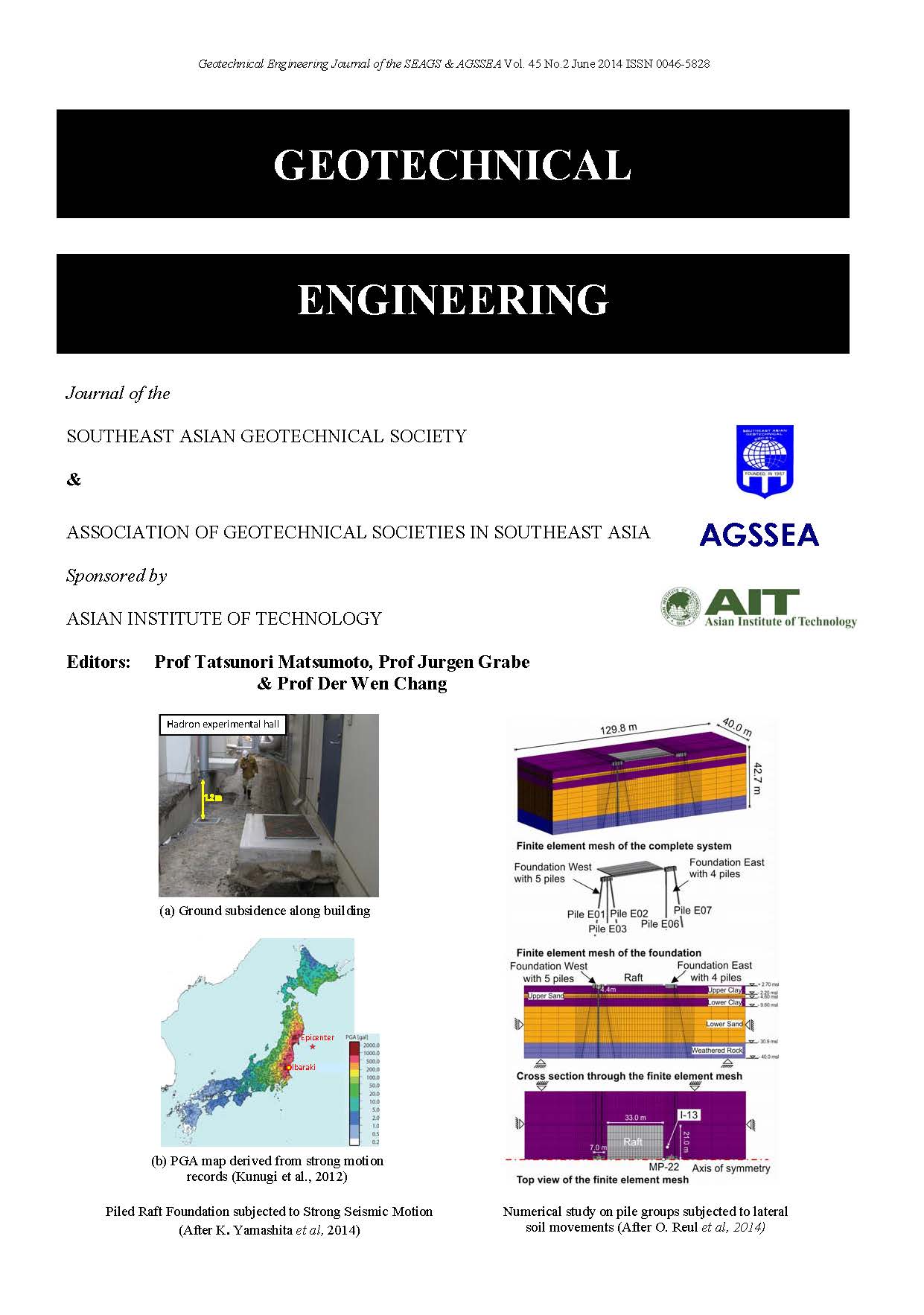Axial Bearing Behaviour of a Model Pile in Sand Under Multiple Static Cycles
Main Article Content
Abstract
This paper designed and built a set of loading equipment for conducting model pile test. The cyclic axial load was manually applied in a displacement-controlled type. A fully instrumented aluminium model pile was designed with the outer and inner diameters of 18mm and 17mm and a length of 450mm. The thickness is only 0.5mm. The length to diameter ratio is approximately 25. Seven strain gauges were carefully pasted on the inner wall and a mini-type load cell was installed at the bottom of the wall. The sand specimens were prepared in a relative density approximately 70% and with a diameter of 40cm and a height of 60 cm. Two types of cyclic axial load were performed for both dry sand and saturated sand. The first applies the compressive load first and then applies the uplift load. This finished a compressive-tensile load cycle(C-T type). The same cycle was then repeated five times. The second applies the uplift load first and then applying the compressive load. This finished a tensile-compressive load cycle (T-C type). Each cycle was then repeated five times also. The measured load-displacement curves of pile head and the transfer curves of the pile shaft were analysed to deduce the characteristics of cyclic axial bearing behaviours. The focus was put on (1) the difference of the compressive and tensile bearing capacities; (2) the effect of the number of applied loading cycles; (3) the development of end bearing capacity with pile head displacement; (4) the unit friction distribution pattern along pile length. Based on the test results, some interesting phenomenon and conclusions are reported herein.
Article Details

This work is licensed under a Creative Commons Attribution-NonCommercial-NoDerivatives 4.0 International License.
Copyright © 2019 Association of Geotechnical Societies in Southeast Asia (AGSSEA) - Southeast Asian Geotechnical Society (SEAGS).


